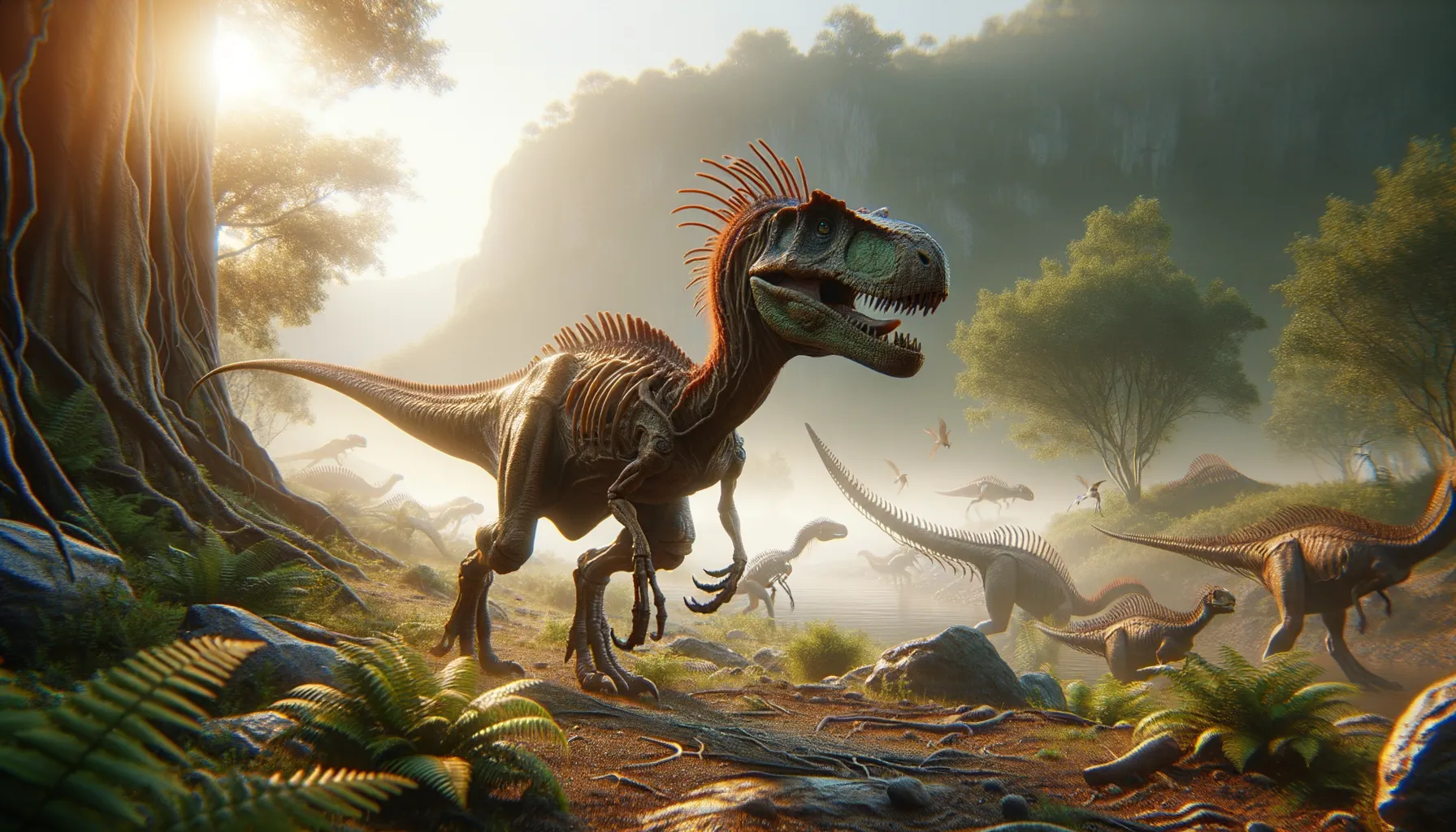
Othnielia
Swift and agile, a Jurassic marvel.
Period
Jurassic
Length
Approximately 2-3 meters long.
Height
Around 1 meter tall.
Weight
Roughly 10-15 kilograms.
Othnielia was a small, bipedal herbivorous dinosaur from the Jurassic period. It belonged to a group of dinosaurs known for their agility and swift movements. Its fossil remains were first found in North America. Initially categorized under different genera, it has undergone several taxonomical revisions. Othnielia's skeletal structure suggests it was well-adapted for rapid movements, likely aiding in its ability to forage and escape predators in its prehistoric environment.
Diet
Othnielia primarily fed on plants. Its diet likely included a variety of ferns, cycads, and other vegetation available during the Jurassic period. Its small, sharp teeth suggest it effectively processed plant material.
Hunting
As a herbivore, Othnielia did not engage in hunting. Instead, it foraged for plants and vegetation. Its size and speed likely helped it avoid predators.
Environmental challenges
During the Jurassic period, Othnielia faced challenges such as finding food and avoiding predators. Its small size made it a target for larger carnivorous dinosaurs. Additionally, it had to adapt to changing climates and compete with other herbivores for resources. Its agility likely played a crucial role in overcoming these obstacles.
Speed
Estimated to be moderately fast for its size.
Lifespan
Likely lived around 10-20 years.
First discovery
Discovered in the late 19th century by Othniel Charles Marsh.
Fun Facts
- Othnielia was named after Othniel Charles Marsh, a famous 19th-century paleontologist.
- These dinosaurs lived during the Late Jurassic period, around 150 million years ago.
- Othnielia was a small dinosaur, estimated to be only about 1.5 meters (5 feet) long.
- It was a plant-eater, with teeth suited for munching on tough vegetation.
- Othnielia's fossils were primarily found in the United States, especially in the Morrison Formation.
- Despite its small size, Othnielia was likely quite agile, helping it escape predators.
- Its small size and herbivorous diet suggest it lived in herds, for protection against predators.
Growth and Development
Othnielia hatched from eggs and grew rapidly to avoid predation. Its growth pattern likely involved quick skeletal development to maximize mobility early in life. Once it reached adulthood, growth would have slowed, focusing on maintaining its delicate balance of speed and energy usage.
Habitat
Othnielia lived in dense forested areas which provided ample plant material for grazing. It inhabited regions that supported a variety of plant life, ensuring a consistent food supply. The environment also offered cover and refuge from predators.
Interaction with other species
Othnielia likely interacted with various herbivorous dinosaurs, possibly competing for similar food resources. It was also preyed upon by larger carnivores. Flocking in groups might have been a defense mechanism against predators.
Natural lifespan
Othnielia likely had a natural lifespan of up to 20 years.
Reproduction
Othnielia reproduced by laying eggs. The eggs were likely laid in nests, possibly in shallow depressions on the ground. Parental care levels are not fully understood, but eggs were likely left to incubate in the natural warmth of the environment.
Social behaviour
Othnielia might have lived in small groups, which could help protect against predators. This social structure would also facilitate learning and foraging. Communication could have ranged from vocal calls to physical gestures.
Fossil locations
Fossil remains of Othnielia have been chiefly found in North America. The first known fossils were dug up in the Morrison Formation. These locations are key sources of various other Jurassic period dinosaur fossils.
